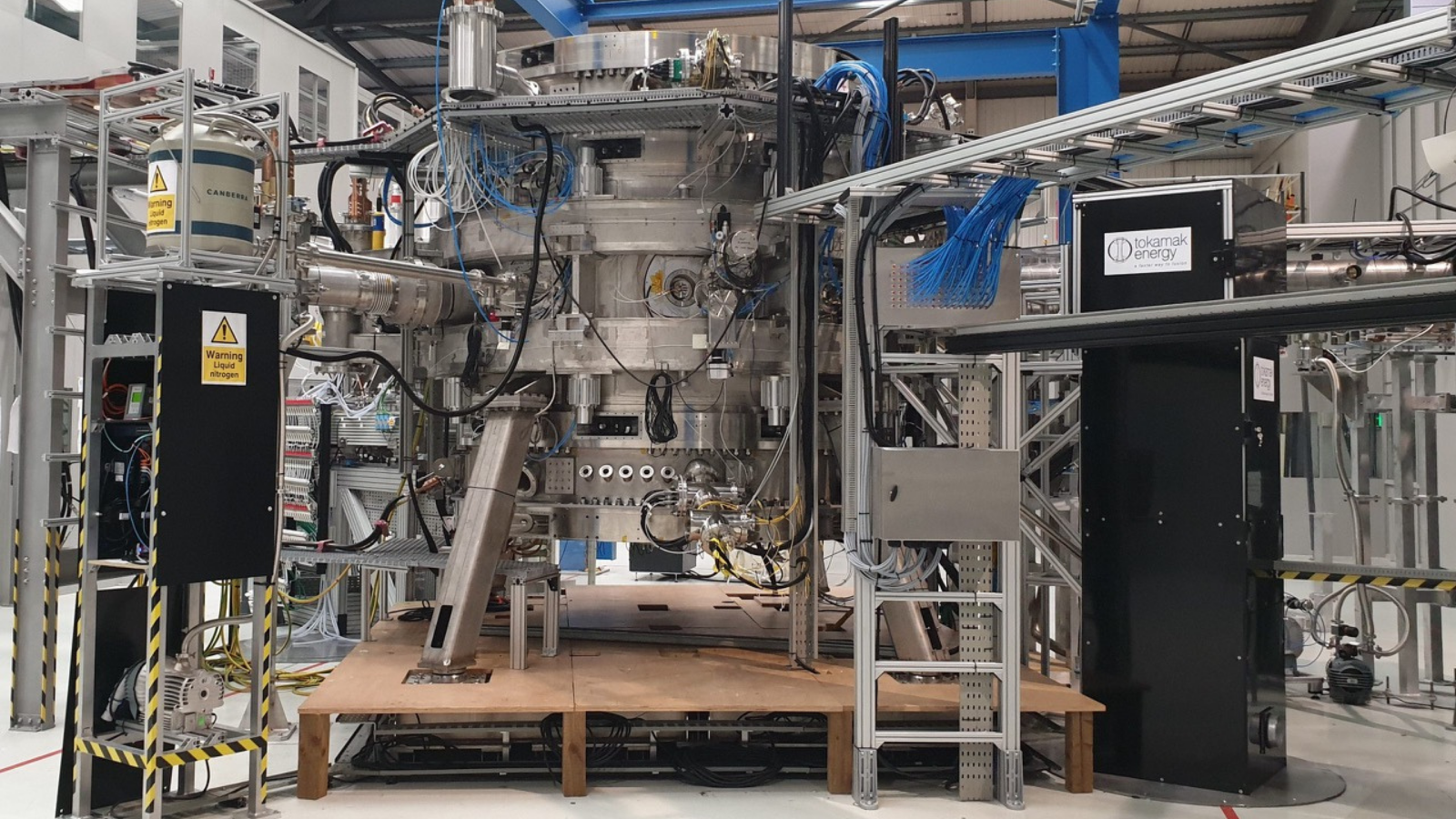Tokamak Energy Achieves Plasma Temperatures of 100 Million Degrees

On Thursday 10th March 2022, private company Tokamak Energy announced that they achieved fusion temperatures of 100 million degrees C in their ST40 fusion device.
So, what have they achieved and how significant is it?
What have they done?
The Tokamak Energy team has achieved plasma temperatures of 100 million degrees in their spherical tokamak fusion device ST40. This is the temperature threshold required for commercial fusion energy.
Why is this result impressive?
This is the highest temperature ever achieved in any spherical tokamak, so a world-first result for this type of device. It is also the highest temperature achieved in any privately-funded tokamak.
They have obtained scientific validation from an independent Diagnostic Advisory Board and will be publishing the results in the scientific literature. The temperature recorded is the actual temperature of the bulk plasma, not simply high-energy beams being introduced into the plasma causing localised heating.
The result demonstrates the company’s fusion capabilities. Tokamak Energy is one of the only private fusion companies that has built and operated a fusion device capable of hitting the temperatures required for fusion. They have also developed relationships that set them up for long-term fusion development. e.g. with suppliers, regulators, collaborators.
Why is it important?
Over 100 million degrees is considered “fusion temperatures”. Achieving this milestone gives confidence that Tokamak Energy and the spherical tokamak device can hit the conditions required for sustained fusion.
The spherical tokamak design was pioneered at Culham Centre for Fusion Energy (UKAEA) and is the basis of the UK’s fusion pilot plant design, STEP, the UKAEA programme that will demonstrate the ability to generate net electricity from fusion.
Spherical tokamaks could be a better design for power plants because they are inherently more efficient than conventional tokamaks, particularly because of their ability to self-generate a “plasma current” which is essential for stability. This reduces the amount of energy produced that needs to be fed into the device to keep it running, therefore increasing the net energy output.
This result is therefore good news for the outlook for spherical tokamaks in general.
It’s also testament to the increased speed of progress in private companies. Tokamak Energy said: “While several government laboratories have reported plasma temperatures above 100M degrees in conventional tokamaks, this milestone has been achieved in just five years, for a cost of less than £50m ($70m), in a much more compact fusion device.”
What’s next?
The ST40 device will now undergo an upgrade and be used to develop technologies for future fusion devices. Meanwhile the company is progressing plans for its next-step device which will combine the spherical tokamak design with advanced high temperature superconducting magnets.
“The ST-HTS, which will be the world’s first spherical tokamak to demonstrate the full potential of high temperature superconducting (HTS) magnets, is due to be commissioned in the mid-2020s. This device will demonstrate multiple advanced technologies required for fusion energy and inform the design of a world first fusion pilot plant, to be commissioned in the early 2030s.”
